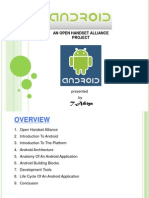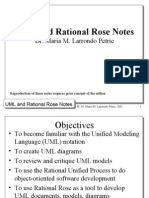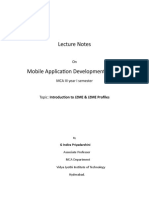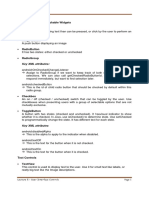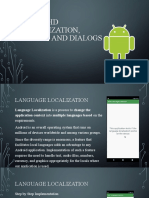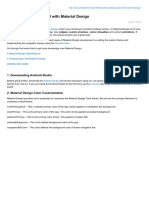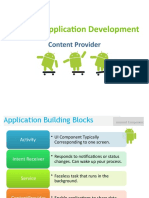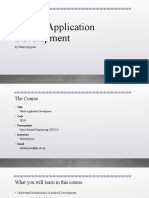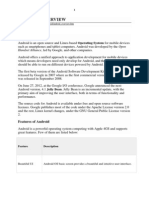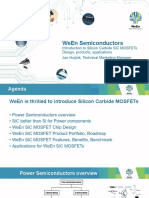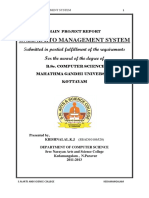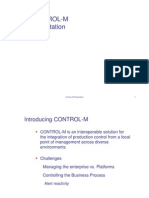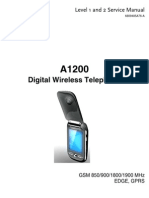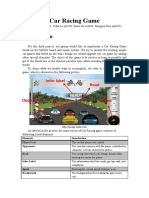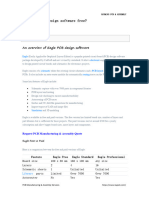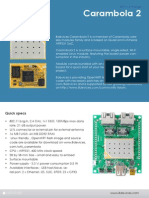Outline
Introduction
What is Android? Android: How it came to be Android Features
Android Architecture Anatomy of an Android Application Hello Android Life Cycle of an Android Application Future of Android
�ABSTRACT
DESIGN and implementation of a music player based on Android in this paper. According to the feature of mobile phone, the music player makes full use of screen to show more information. In addition to the basic functions of playback, the music player can also make music rating and display the previous and next music name of current music. The design of the player also has some significance for developing other applications on Android.
�What is Android?
ANDROID
Open, free software platform for mobile devices with a complete software stack
Operating system Middleware Key mobile applications
Based on Linux operating system Made available as open source via the Apache v2 license
�Open
Android is...
Allows access to core mobile device functionality through standard API calls
Example
Application can call core functionality such as making calls, sending text messages, using camera... Developers can create richer and more cohesive experiences for users
Since it's open source, it can be liberally extended as new technologies emerge
�All Applications are Equal
In Android...
Android does not differentiate between the phone's basic and third party applications
All applications have equal access to the phone's capabilities Example:
The dialer and home screen can be replaced
�Breaking down boundaries
Android is...
Information from the web can be combined with data on the phone
Example:
Contacts, calendar or geographic location
�Fast and Easy Development
Android allows...
SDK (Software development kit) includes
True device emulator and advanced debugging tools Useful libraries and tools
Example
Obtain location of the device Allow devices to communicate with one another
�Android Features
Application framework
enable reuse and replacement of components
Dalvik virtual machine
optimized for mobile devices
Integrated browser
based on the open source WebKit engine
Optimized graphics
powered by a custom 2D graphics library 3D graphics based on the OpenGL ES 1.0 specification (hardware acceleration optional)
�Android Features
SQLite
For structured data storage
Media support for common audio, video, and still image formats
MPEG4, H.264, MP3, AAC, AMR, JPG, PNG, GIF
GSM Telephony (hardware dependent) Bluetooth, EDGE, 3G, and WiFi (hardware dependent) Camera, GPS, compass, and accelerometer (hardware
dependent)
�Android Features
Rich development environment
which includes
device emulator tools for debugging memory and performance profiling a plugin for the Eclipse IDE
�Android Architecture
Major components of the Android OS
�Android Runtime
Android Architecture
Main Component: Dalvik Virtual Machine
Optimized for running in an embedded environment (limited memory, CPU,battery) Runs .dex files (bytecodes)
.class .jar files
Converted at build time Optimized! More efficient!
�Android Runtime
Android Architecture
Core Library
Contains all the collection classes, utilities, IO, etc.
�Applications
Android Architecture
Core Applications
Email client SMS program Calendar Maps Browser Contacts etc
All applications are written using the Java Programming Language
�Anatomy of an Android Application
Application Building Blocks
Activity Intent Receiver Service Content Provider
�Activity
Activity
Anatomy of an Android Application
UI typically corresponding to one screen Move through screens by starting other activities Example
Email application has 3 major activity
List your mail Chosen individual mail message Compose screen
��Intent Receiver
Anatomy of an Android Application
Intent Receiver
Responds to notifications or status changes Can wake up your process Doesn't run unless triggered by an external event Example
Only run an application when connected to the network
�Service
Service
Anatomy of an Android Application
Faceless task that runs in the background Example
Music player
Keeps playing even though you are navigating to other parts
�Content Provider
Anatomy of an Android Application
Content Provider
Enables applications to share data Example
Any application can access the contacts database
�Hello Android
A Peek at an Android App
21
�Hello Android
A Peek at an Android App
22
�Application Lifecycle
Every application runs its own process
Benefits: security, protected memory, applications using CPU intensively won't block other activities
Processes are started and stopped as needed to run an application's components Processes may be killed to reclaim resources
It's my problem to launch/ kill processes, manage resources, saving states, etc.
�Interesting APIs
�Java Code + XML and Other Resources + Manifest File = Android App
�IMPLEMENTATION OF MUSIC PLAYER
A. SOFTWARE ARCHITECTURE
The music player adopted front-back end architecture. The front-end consists of player interface and music list and was achieved by activity for interacting with user. The back-end is the implementation of playback which based on service. The communications between frontend and back-end are via intent.
�ARCHITECTURE OF MUSIC PLAYER
FRONT END
PLAYER INTERFACE (ACTIVITY)
BACK END
PLAYBACK (SERVICE)
back end
MUSIC LIST (ACTIVITY)
�SOFTWARE MODULES
The music player consists of some modules which are tab, player interface, playback, music list, list, file, mp3 information, constant value and settings.
�TAB
BLOCK DIAGRAM OF MUSIC PLAYER
MUSIC LIST
PLAYER INTERFACE
PLAYBACK
LIST
CONSTANT VALUE
FILE SETTINGS Mp3 information
�1.TAB MODULE
The tab module is the first module the player runs when the player is opened, which is used to build two tabs which are player and music list. The player associated with player interface and the music list associated with music list, which not only make full use of screen of mobile phone, but also switch between player interface and music list easily.
�2.PLAYER INTERFACE MODULE
The player interface module provides the player interface for user, and the control operations and display information of player are via it. The player interface consists of current music name, status, current/total time, progress bar, previous, play, pause, stop, next, play mode, music rating, previous and next music name.
�3.MUSIC LIST MODULE
The music list module is used to build music list by invoking list module. The music list is clickable, and the music will play when you click the music name in the list. The information of the music you clicked is encapsulated in intent and sent to playback module to play the music.
�4.PLAYBACK MODULE
The playback module is used to achieve playback and related operations, such as play, pause, stop, display the current, previous and next music name and update the progress bar. The playback module is the core module which based on service. In this module, we achieved that how to translate commands which come from the player interface module and music list module into operations and the information which is encapsulated in intent is sent through broadcast. The playback module invokes the constant value module to match the commands, and invokes the settings module to get and save the settings information.
�THE WORKFLOW OF MUSIC RATING
MUSIC RATING CHANGED
CLICK BY USER GET THE CURRENT MUSIC NAME
Save the music name and the related music rating value
DISPLAY THE MUSIC RATING VALUE
END
�WORKFLOW OF UPDATING TIME
START Create the thread of updating time Define and initialize variable Player is stop Get the current time and total time Translate the time Encapsulate time into intent Send intent via broadcast
�5) CONSTANT VALUE MODULE
The constant value module holds a variety of constants defined by ourselves, which represent the various commands and are used to send and receive the commands.
6) SETTINGS MODULE
Settings module is used to save and get a variety of setting values by using Shared Preferences . Shared Preferences, which provided by Android, is a mechanism for data access, and data store in the XML file as key-value pairs.
�7) LIST MODULE
The list module encapsulates the Simple Adapter class, and that could be directly invoked by music list module to build music list.
8) FILE MODULE
The file module searches the music files in the SD card and saves the information which can be used to build the music list.
9) MP3 INFORMATION MODULE
The MP3 information module provides some operations about attributes of Mp3.
�CONCLUSION
Android is a multi-process system, in which each application (and parts of the system) runs in its own process. The ability for anyone to customize the Google Android platform
The consumer will benefit from having a wide range of mobile applications to choose from since the monopoly will be broken by Google Android
Men will be able to customize a mobile phones using Google Android platform like never before

